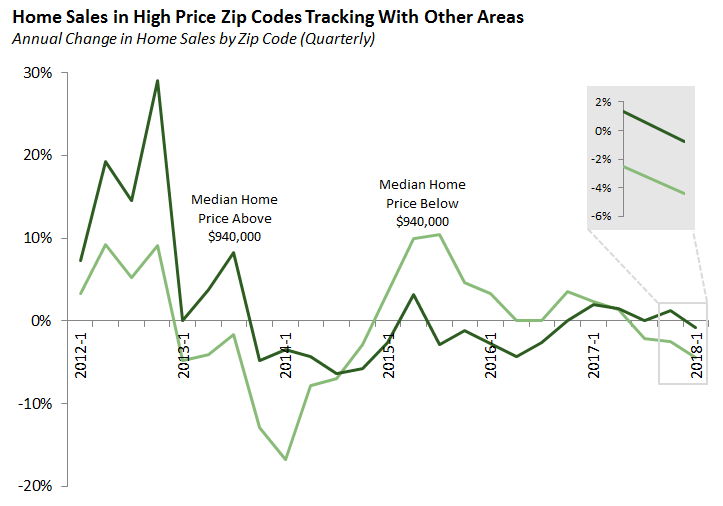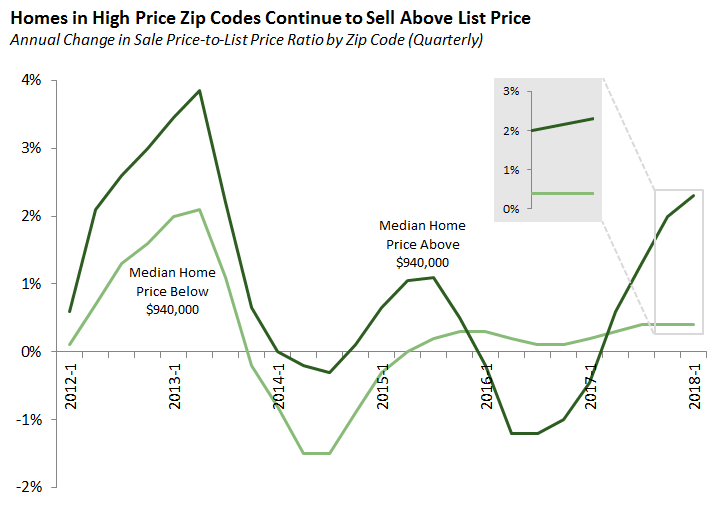In December 2017, Congress passed a package of changes to federal personal income tax and corporation tax laws. Among these changes were new limits on two widely used personal income tax deductions:
- Mortgage Interest Deduction. Under prior law, taxpayers could deduct interest paid on up to $1 million in mortgage debt for a primary residence and/or second home. Under the new law, the mortgage interest deduction is limited to $750,000 in mortgage debt.
- State and Local Tax Deduction. Under prior law, taxpayers could deduct the amounts they paid for local property taxes plus state income taxes or state and local sales taxes. Under the new law, these deductions are limited to $10,000 per year.
Both of these changes generally increase the income taxes paid homeowners. Owners of high priced homes are more likely to be impacted, as more expensive homes typically require more borrowing and higher property tax payments. Some have predicted that these changes in federal tax law will discourage the purchase of homes in parts of California with very expensive housing, such as the San Francisco Bay Area and parts of Southern California.
It is far too early to draw any strong conclusions about the impact of these tax changes on California’s housing market. Nonetheless, it may be informative to look at housing market data from early 2018 for signs of any dramatic shifts that could indicate the tax changes are having a significant impact. To look for any such shifts, we compared recent trends between two groups: zip codes with median home prices above $940,000 (roughly the home price that would require a mortgage of $750,000 with a 20 percent down payment) and zip codes with median home prices below $940,000. Overall, we did not see any signs that pointed to downward pressure on prices or sales in high-priced markets.
The graph below shows year-over-year changes in home sales on a quarterly basis for our two groups of zip codes. As this graph shows, home sales in the two groups of zip codes have tended to track together in recent years. This pattern continued in the first quarter of 2018, as both groups experienced a slight decline in sale activity. Taking a broader view, we find that there is no measurable relationship between a zip code’s home price and the change in home sales in that zip code between the fourth quarter of 2017 and the first quarter of 2018.
The graph below is similar to the one above but displays information on the ratio of sale prices to list prices. If California’s expensive housing markets were experiencing a drop in demand, we might expect to see more purchases being made below the sellers initial list price. As the chart shows, however, sale prices grew faster than list prices in California’s high priced zip codes in the first quarter of 2018.


